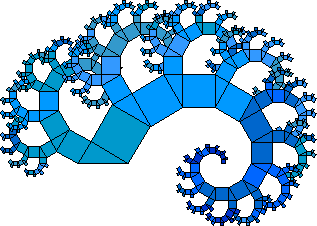Grid Computers
this page will be continuously updated
We all know a PC, probably heard of supercomputers. But something like a GRID computer is only known to a small section of ICT professionals. Little you hear about such machines via newspapers, or some via the internet when you look for it.
Machines in a grid configuration cost a fraction of what a super cost: less than 10%.
If you use micro computers to combine into a grid. You will have a little less power but by adding more members you can generate computing power way beyond the limits of the individual machines.
If
you combine machines like IBM RN6000's into a grid or cluster you will
have gigantic super power. An example of this is Blue
Gene that beat the world champion in chess: Casparow in 1998
In fact a grid can easily grow into a super that is mostly a combination
of parallel computers or a massive amount of cpu's mounted on separate
cards, like the Cray machines
Look at a grid computer as if a million people can calculate faster together then doing the calculations all on them individually.
"With a million people you can create a road in one day, one worker needs a million days to do the same."
The image below is a very, very simplified example of this principle.

Each yellow dot represents a computer. Each computer has one single task: add two numbers.
The trick is while adding two numbers and passing
that to the next row ( 2 + 2 ) the first row can do a new calculation
again while the other is busy.
And as you see the final answer does not have to be computed by one single
computer. In principle this is how supers and all other parallel computers
work too! You will also see that this type of computing is useless when
you only have to do some simple adding.
Another example that illustrates the sheer strength of a grid computer is when you draw a fractal (ref: mandelbrot) image. Each turn/part can be calculated separately because the high symmetry of the image:

courtesy: www.quansoft.com/ex/html
This (simple) image can be created instantaneously in stead of some seconds. Some fractal images are quite complicated:

courtesy: math.ucsd.edu/math/funfacts/fractals
As you might have guessed this class of computers has brethren in all computer stratae:
| Quantum computers | |
| Grid computers | |
| Supercomputers | |
| Mainframes | |
| Mini computers | |
| Microcomputers | |
| Terminals | |
| Embedded computers |
The ranking of a grid computer could as you will understand be placed in all classes.
A grid computer is nothing else than a multiple number of the same class of computers clustered together. Often the connecting technology is called clustering. Internal a grid computer is connected through a superfast network and shares other devices such as diskdrives, printers, mass storage and mass memory. A sophisticated operating system takes care for the (load) sharing in computing and processing.
The big difference with mainframes and supercomputers is that a grid or cluster computer is mostly build from a large number of self-contained computers. At least the separate machines could work stand alone. And the other big difference is: it can be build from low end computers like Intel pentium machines. And even Commodore 64's if you could change the OS to work parallel and amass enough C64's
to be continued
Conclusion
![]()
| Last Updated on February 25, 2003 | For suggestions please mail the editors |
Footnotes & References
| 1 | refer to programmersheaven.com/zone10/cat101/809.htm to get an example in C++ for a mandelbrot graph |
| 2 |